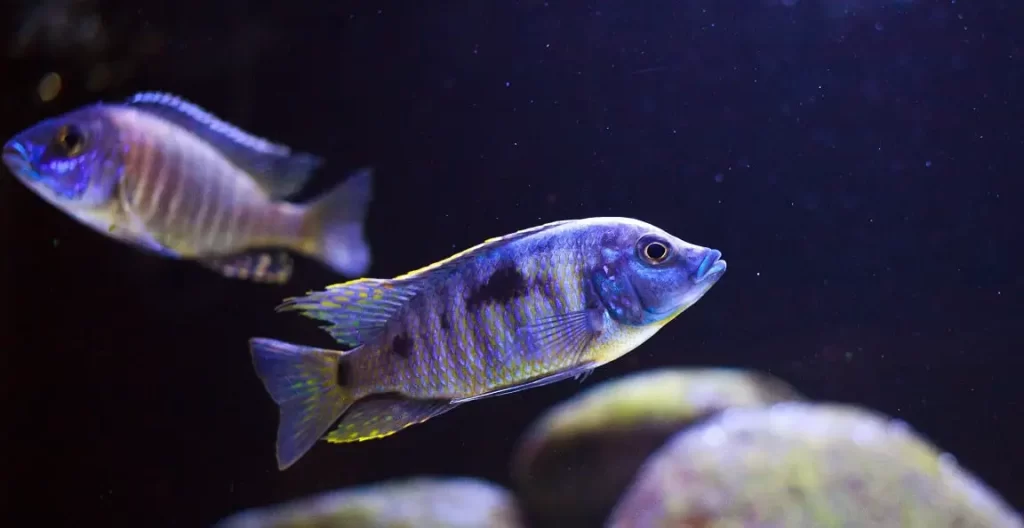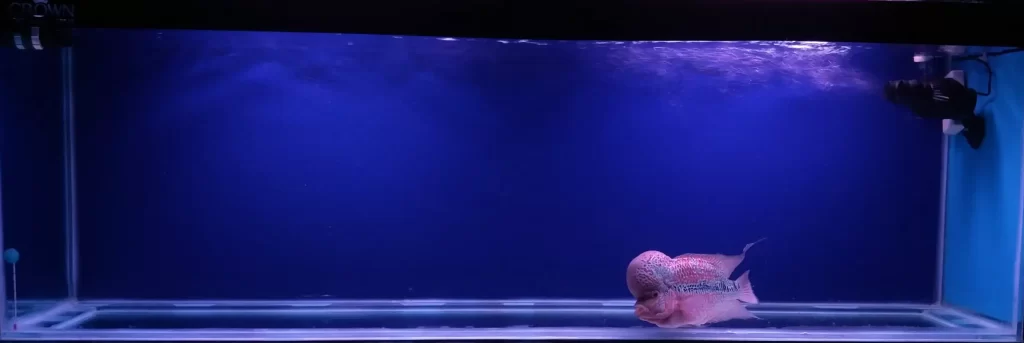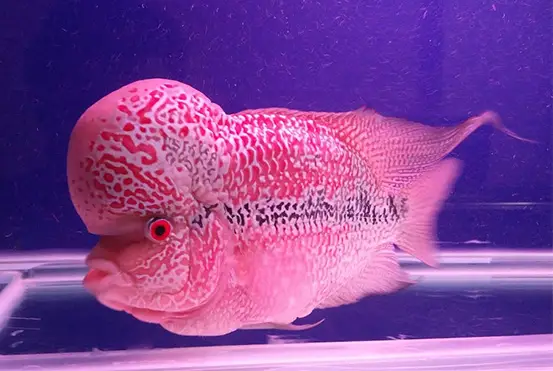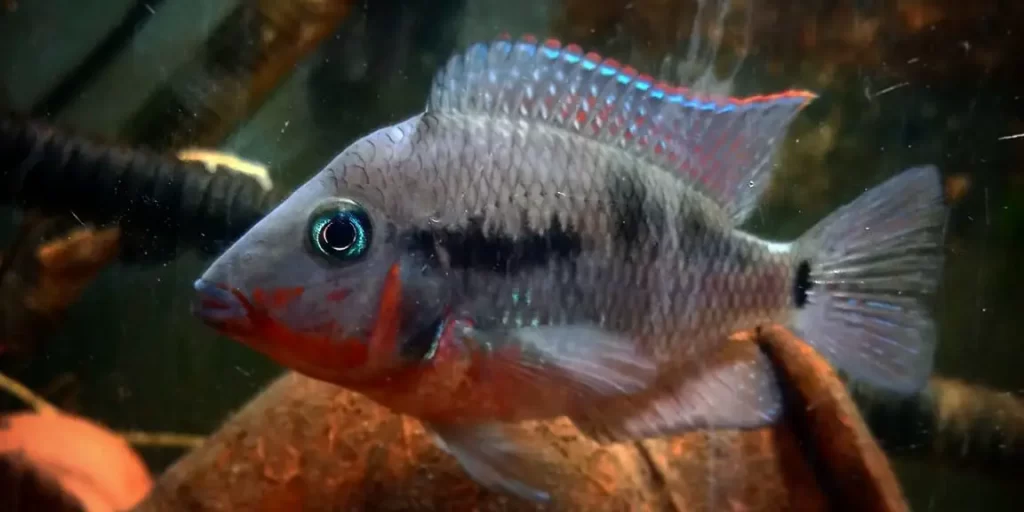There’s no doubt that Angelfish are one of the best fish to keep in an aquarium. They’re beautiful, they come in a variety of colors, and they have interesting personalities. Owing to its wonderful appearance and popularity, many people believe that keeping angelfish is difficult. So, are angelfish hardy fish?- is a common query among beginners. But are they hardy?
Yes, angelfish are quite hardy fish and can adapt to a wide range of water conditions. They’re also relatively easy to care for, making them a good choice for beginner aquarists. But they do have some special needs that need to be taken into account. For instance, angelfish require a tank with plenty of hiding places and some open space to swim. They also prefer water that is slightly acidic and soft.
If you have just added angelfish in your tank, are thinking about it, or currently struggling to keep them alive, then this article is for you. We will be discussing the hardiness of angelfish and what makes them easy or difficult to maintain. So, let’s get started.
What Type Of Fish Is Angelfish?
The scientific name for angelfish is Pterophyllum. They are freshwater fish and part of the cichlid family. There are three different species of angelfish; Pterophyllum scalare, Pterophyllum altum, and Pterophyllum leopoldi.
Angelfish are characterized by their tall and laterally compressed bodies. They have long fins and small mouths. The size of an angelfish can range from four inches to eight inches. Angelfish come in a variety of colors, patterns, and shapes.
The natural habitat of angelfish is in the freshwaters of South America. Angelfish are tropical fish, which means they prefer warm water that is between 76 and 82 degrees Fahrenheit. In the wild, you can find angelfish in slow-moving rivers with dense vegetation. Angelfish are also found in floodplain lakes when the rainy season causes the river to overflow.
Although maintaining an environment that replicates their wild habitat is quite complicated, keeping them isn’t so difficult.
Are Angelfish Hardy Fish?
You might be wondering, are angelfish hardy fish? The answer is yes and no.
On the one hand, they are very resilient and can adapt to a wide range of water conditions. They are also not too sensitive to changes in temperature or pH levels. Overall, they are fairly easy to care for.
However, angelfish can be quite delicate when it comes to their diet. They are very particular eaters and need a well-balanced diet of both plant and animal matter to thrive. They also need a lot of hiding places and caves in their tank to feel secure. If they don’t have enough of these, they can become stressed and fall ill.
Generally, there are a few things to take into account for Angelfish care:
Schooling Behavior Of Angelfish
Angelfish are schooling fish, which means they like to live in groups. In the wild, you can find them swimming in schools of up to 20 fish. In captivity, it’s best to keep at least six angelfish together.
If you don’t have enough angelfish, you can become stressed and aggressive. This can lead to bullying and even death.
Growth
Angelfish grow quite quickly, reaching a full size of around six inches within the first year (18 months). If you feed them a nutritious diet, then they can grow even bigger. Once they reach full size, their growth will start to slow down. However, they can live for up to 15 years if properly cared for.
Tolerance
Angelfish are very tolerant fish and can adapt to a wide range of water conditions. They are not too sensitive to changes in temperature or pH levels. However, they do prefer water that is slightly acidic and soft.
Compatibility With Other Fishes
Angelfish are compatible with a wide range of other fish. However, there are a few things to take into account. Angelfish can be aggressive towards fish that have similar patterns or colors. They also tend to bully smaller fish. It’s best to avoid keeping them with fish that are too small or slow-moving.
With all of this in mind, we can say that, yes, angelfish are hardy fish. They are resilient and adaptable creatures that can live for a long time if properly cared for.
Are Angelfish Difficult To Keep? How To Take Care Of Them?
Angelfish are not difficult to keep, but they are not the hardiest fish in the world either. They are very easy to care for and are great beginner fish. The hardest part about keeping angelfish is acclimating them to your tank. Once they are acclimated, they are very hardy fish.
However, there are something things that you need to take care of when you keep Angelfish, like:
Select Perfect Aquarium Size
Angelfish need at least a 20-gallon aquarium. They also need to be in an aquarium that has a lot of hiding places. Angelfish are very shy fish and will often hide if they feel stressed.
The ideal tank size for Angelfish would be 55-gallon. These fish are active fish that likes to swim around. Moreover, Angelfish are shoaling fish which means they like to be in a group and cannot live alone. So, the bigger the aquarium, the better.
Maintain An Ideal Water Quality
Angelfish are very sensitive to water quality. They need clean and well-filtered water. The water temperature should be between 75 and 82 degrees Fahrenheit. The pH level should be between six and eight.
You also need to do a weekly water change of at least 20%. This will help to keep the water quality high and the fish healthy.
For this, you can use one of the following heaters:
- HITOP PTC Adjustable Aquarium Heater, Sturdy Fish Tank Heater with Protective Cover, 100W/200W/300W/400W Heater for Fresh/Saltwater Fish/Turtle Tank up to 120 Gallon
- hygger Variable Frequency Aquarium Heater, 500W Quartz Fish Tank Heater with LED Digital Display Thermostat Controller for 50-100 Gallon Freshwater Saltwater Tank
- Eheim 3619090 Jager Aquarium Thermostat Heater 300W, Black
Feed Them The Right Food
Angelfish are omnivores, which means they will eat both plants and animals. They need a diet that is high in protein and low in carbohydrates. You can feed them live food, frozen food, or pellets.
Some of the best foods for Angelfish are brine shrimp, bloodworms, daphnia, and glass worms. You should feed them two to three times a day.
The brands that you can use for this purpose are:
- Omega one pellets
- Ocean Nutrition Instant Baby Brine Shrimp 0.7-Ounces (20 Grams) Jar
- Omega One Freeze-Dried Blood Worms, 0.96 oz
- 200 Live Daphnia by Aqua L’amour
- Hikari Bio-Pure Freeze Dried Daphnia for Pets, 0.42-Ounce
- Hikari Tubifex Worms Fish Food (0.7 oz.) [Set of 2]
- Hikari Flowerhorn Fish Food
Separate The Breeding Fish
If you want to breed Angelfish, you need to separate the breeding fish. The female Angelfish will lay the eggs and the male will fertilize them. After about two weeks, the fry will hatch.
You need to remove the fry from the tank because the parents will eat them. You can put them in a breeder box or another tank.
Monitor The Fish And Their Activity
You need to monitor the fish and their activity. This will help you to see if they are healthy and happy. Angelfish are very active fish and should be swimming around a lot. If you notice that the fish are not active, it could be a sign of stress or illness. Make sure to check the water quality and temperature to make sure everything is ideal.
Provide Them With The Right Tankmates
Angelfish are not the best tankmates for other fish. They are very territorial and can be aggressive towards other fish. They are best kept with other Angelfish or peaceful fish that are the same size.
Some of the best tankmates for Angelfish are:
Avoid Any Kind Of Stress
Angelfish are very sensitive to stress. They can get sick easily if they are stressed. You need to avoid anything that could cause them stress. This includes:
- sudden changes in water parameters
- too much noise or light
- not enough hiding places
Don’t Change The Water Frequently
Angelfish are very sensitive to changes in water quality. So, you should only change the water every two weeks. In addition to this, it is also vital to monitor the water parameters closely.
So, as you can see, Angelfish are not difficult to keep. They are very easy to care for if you provide them with the proper environment and diet.
With a little bit of care, you will have happy and healthy Angelfish that will bring beauty to your aquarium.
But what about the diseases in Angelfish? They are also very important if you want a happy fish.
Angelfish Diseases And Infections
Angelfish are susceptible to several diseases and infections. The most common ones include bacterial infections, parasites, and fungal infections.
Bacterial Infections
Bacterial infections are the most common type of infection in angelfish. They can be caused by several things, including poor water quality, stress, or injuries. The most common symptom of a bacterial infection is cloudy eyes. Other symptoms include lethargy, loss of appetite, and redness or swelling in the fins and body.
Parasites
Parasites are another common type of infection in angelfish. They can be transmitted through contaminated water or food. However, the most common symptom of parasites is scratching or rubbing against objects in the tank. Other symptoms include lethargy, loss of appetite, and weight loss.
Fungal Infections
Fungal infections are less common than bacterial or parasitic infections, but they can still occur. Usually, this infection is caused by poor water quality or stress. The most common symptom of a fungal infection is a white cottony growth on the skin or fins. However, the other symptoms include lethargy, loss of appetite, and redness or swelling in the fins and body.
How To Prevent Angelfish Diseases And Infections
The best way to prevent diseases and infections is to maintain a clean and healthy environment. This includes regular water changes, proper filtration, and adequate tank size. In addition to this, you should also avoid overfeeding and keep a close eye on your fish for any signs of illness.
If you think your fish is sick, the best thing to do is to take it to the vet for a check-up. Angelfish are delicate creatures, so it’s important to get them seen by a professional as soon as possible.
FAQs
What Are The Hardiest Angelfish?
Pterophyllum scalare, also known as the common angelfish or scalare angelfish, is one of the hardiest species of freshwater angels. They are a popular choice for beginner aquarists because they are relatively easy to care for and have a peaceful temperament.
Are Angelfish Good For Beginners?
Yes, angelfish are good for beginners. They are relatively easy to care for and have a peaceful temperament. With proper care, they can live for several years.
What Type Of Foods Are Best For Angelfish?
Angelfish are omnivorous and will eat a variety of foods, including flakes, pellets, live food, and frozen food. It is important to provide them with a balanced diet that includes all the nutrients they need.
What Are The Most Common Angelfish Health Problems?
The most common health problems for angelfish include poor water quality, parasites, and bacterial infections.
Conclusion
In conclusion, angelfish are hardy fish that can withstand a wide range of water conditions. They are relatively easy to care for and make a beautiful addition to any aquarium. With proper care, angelfish can live for many years in captivity.
If you’re thinking of adding an angelfish to your aquarium, be sure to do your research to ensure they will be compatible with your other fish. Angelfish are a popular choice for many aquarists, and with good reason!
Do you have an angelfish? Tell us about your experience in the comments below!






